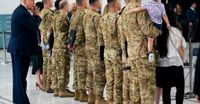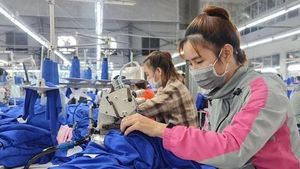Los Angeles found itself at the epicenter of a fierce showdown over immigration enforcement this past weekend, as President Donald Trump took the rare and controversial step of deploying 2,000 National Guard troops to the city and surrounding areas. This unprecedented federal intervention, which bypassed California Governor Gavin Newsom’s authority, sparked sharp condemnation from local and state officials and ignited protests amid already heightened tensions following recent immigration raids.
On Saturday, June 7, 2025, the White House announced that President Trump had signed a presidential memorandum authorizing the deployment of National Guard forces under Title 10 powers. This legal provision allows the federal government to activate state National Guard troops without a governor’s consent in cases of rebellion or threats to federal authority. Trump’s directive cited “numerous incidents of violence and disorder” and framed the protests against immigration enforcement as a form of rebellion, stating that they “directly inhibit the execution of the laws” and threaten federal immigration detention facilities.
Karoline Leavitt, White House press secretary, defended the move by describing the situation as one where “violent mobs have attacked ICE Officers and Federal Law Enforcement Agents carrying out basic deportation operations.” She asserted that the National Guard deployment was necessary to “address the lawlessness that has been allowed to fester” in Los Angeles County. Meanwhile, Tom Homan, the Trump administration’s border czar, told Fox News, “We’re going to bring the National Guard in tonight,” emphasizing the administration’s commitment to enforcing immigration laws despite public outcry.
However, this federal action was met with fierce opposition from California’s political leadership. Governor Gavin Newsom condemned the deployment as “purposefully inflammatory” and warned it would “only escalate tensions.” He stressed that local law enforcement was already capable of managing the protests, stating, “LA authorities are able to access law enforcement assistance at a moment’s notice. We are in close coordination with the city and county, and there is currently no unmet need.” Newsom criticized the federal government for attempting to “take over the California National Guard” without his consent, a move he said would “erode public trust.”
Los Angeles Mayor Karen Bass echoed these concerns, describing the period as “a difficult time for our city” as it recovered from unprecedented wildfires. She condemned the Trump administration’s immigration enforcement actions for stoking fear within the community and called reports of unrest outside the city, including in Paramount, “deeply concerning.” Bass emphasized the right to peaceful protest but was clear that “violence and destruction are unacceptable, and those responsible will be held accountable.”
The protests themselves were sparked by federal immigration raids that began on Friday, June 6, 2025, targeting workplaces in Los Angeles County, including the downtown fashion district and a Home Depot in Paramount. Demonstrators gathered in response, with some clashes turning confrontational. In Paramount, federal agents in riot gear used tear gas and flash-bang grenades to disperse crowds, while a small group in downtown Los Angeles reportedly threw large pieces of concrete at police during a demonstration declared an unlawful assembly. At least 44 people were arrested on suspicion of immigration violations during these operations.
One high-profile arrest was that of David Huerta, president of the labor union SEIU California, who was detained during the raids and briefly hospitalized due to injuries sustained. His arrest drew widespread condemnation from California Democrats, including Newsom, highlighting the escalating tensions between federal authorities and local communities.
The Los Angeles Sheriff’s Department, which oversees law enforcement in Paramount, urged the public to “exercise the right to protest peacefully with respect for the safety of all community members.” They clarified that deputies were involved solely in traffic and crowd control and were not participating in federal immigration enforcement operations.
Legal experts and civil liberties advocates criticized the federal deployment as an overreach of executive power. Erwin Chemerinsky, dean of the UC Berkeley School of Law, described the federal government’s takeover of the California National Guard without the governor’s request as “truly chilling” and warned that it represented “using the military domestically to stop dissent.” He noted that such federalization of the National Guard is historically rare, last occurring in 1992 when President George H.W. Bush sent troops to Los Angeles to quell riots following the Rodney King verdict—but that deployment was at the governor’s request.
Jessica Levinson, a law professor at Loyola Marymount University, highlighted the legal complexities, pointing out that while local officials like Newsom and Bass characterized the events as protests, the president framed them as a violent uprising. She predicted significant legal battles ahead over the scope of presidential authority under Title 10 and the Insurrection Act, the latter allowing federal troops to suppress insurrections but traditionally reserved for extreme circumstances.
The American Civil Liberties Union (ACLU) also condemned the deployment. Victor Leung, chief legal and advocacy officer at the ACLU Foundation of Southern California, called the National Guard’s deployment “plainly retaliation against California” and “akin to a declaration of war on all Californians.” He emphasized that workers in garment districts or day laborers do not threaten public safety but are “our fathers and mothers and neighbors.” The ACLU announced plans to file suit to hold the administration accountable and protect communities from further attacks.
Defense Secretary Pete Hegseth warned on social media that if violence continued, active-duty Marines stationed at Camp Pendleton, about 100 miles south of Los Angeles, could also be mobilized. Governor Newsom condemned this as a “threat to deploy Marines against U.S. citizens” and labeled it “deranged behavior.”
This National Guard deployment marks a significant escalation in President Trump’s second term immigration crackdown, which has included sending National Guard soldiers with heavy combat vehicles to the southern border and requesting 20,000 troops nationwide to assist with immigration roundups. The move to federalize California’s National Guard without the governor’s consent is unprecedented since 1965, when President Lyndon B. Johnson sent troops to Alabama to protect civil rights demonstrators.
As Los Angeles braces for the potential fallout, the city continues to recover from devastating wildfires while facing this new wave of unrest. The situation remains tense, with local officials urging peaceful protest and warning against violence, while the federal government stands firm on its aggressive immigration enforcement strategy. The coming days will likely see ongoing clashes, legal challenges, and deepening political divides over the use of military force on American soil.





